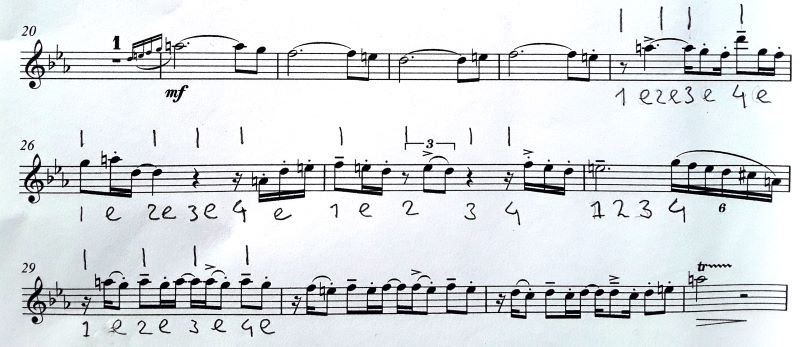In this blog, I’ll give you a few simple yet highly effective tips for practice. Practicing smartly ensures that you can learn to play something you thought you could never master. It helps you avoid annoying mistakes that keep resurfacing. It contributes to more enjoyment while playing and less nervousness before performances. So, put aside the ‘I’m too old,’ ‘I started too late,’ or ‘I’m not musical’ excuses and remember that you mainly want to find the right method.
This time, I’m providing tips based on the book “Lezen, weten en niet vergeten” (Reading, Knowing, and Not Forgetting) by Mark Tigchelaar. I’ll translate these tips into the context of music in the upcoming blogs. Here’s the third principle: Embrace Single Tasking!

Imagine I’m giving you a lesson. You play a piece, and afterward, I ask you to play it again while focusing on dynamics, intonation, your embouchure, and the attack. This would be too much to think about, and playing wouldn’t exactly be relaxed. But in music, you have to simultaneously blow, attack, and keep track of the rhythm, etc. So, we often just start playing and try to do everything as well as possible.
When learning a new piece, it becomes more challenging; how do you create a step-by-step plan? Some people start with the pitch and play all the pitches in sequence like a kind of rebus puzzle, hoping that a logic and correct rhythm will magically emerge. This is not practical because this coherence usually doesn’t occur miraculously. Moreover, you end up practicing things incorrectly, which can be challenging to correct later on.”
Returning to Tigchelaar’s principle: embrace single-tasking. The conclusion after a five-year comparative study of more than six hundred scientific articles on this subject is: when you perform multiple tasks simultaneously, multitasking, you are on average four to ten times slower and make significantly more mistakes in each task. Not handy at all, even though it sometimes feels like a time saver.
But don’t we often do things simultaneously? Cycling and talking? Walking and playing? That’s correct, and it’s not a problem. It only becomes a problem when you learn to cycle and have a difficult conversation at the same time. It’s about the amount of conscious attention you need. Is something new or challenging? Then you want to focus your conscious attention on that.
In the case of music, focus on one aspect at a time that you want to improve, such as playing loudly and softly. So, going back to the lesson situation: I might ask you, for example, to play the piece again and specifically pay attention to the dynamics. While playing, you notice various things: ‘Hey, here it says you should play softly, I hadn’t noticed that!’ or you realize that it’s quite challenging to play really softly. The next time, you’ll apply the dynamics better, even if you’re not actively focusing on it anymore.

When learning a new piece of sheet music, nothing comes naturally at first, so how do you start? What is a good first step? The key is to first hear the music in your mind, without the instrument. This is easily achievable, and you won’t ingrain any mistakes. Start by determining the type of piece it is; mood, style, tempo, time signature. Then, hear the music roughly in your mind before playing. This way, you’ll know whether it should be a rhinoceros or a flower. So, start from the outline and then gradually fill in the details.
Have fun studying!
Floor Wittink